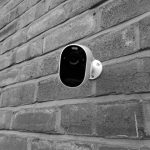Table of Contents
- Introduction to wireless home security
- Benefits of wireless home security system
- Types and Comparison
- Tips on choosing the right one for your home
- Installation and Troubleshooting
- Conclusion
- Frequently Asked Questions
Introduction to wireless home security
Home security is a top priority for homeowners and renters alike. With the advancements in technology, wireless home security systems have become a popular choice for many people. These systems offer a number of benefits that traditional wired systems do not.
Wireless home security systems use radio frequency technology to transmit signals between the security devices and the control panel. This eliminates the need for drilling holes and running wires through your walls, making installation much easier and less disruptive.
Wireless systems also offer greater flexibility in terms of the placement of sensors and cameras, as well as the ability to easily expand or upgrade the system in the future.
Another benefit of wireless home security systems is the ability to remotely access and control the system via a smartphone or other device. This allows you to check on the status of your home, arm, or disarm the system, and receive notifications of any activity or alarms.
In this article, we will compare the different types of wireless home security systems, including self-monitored systems, professionally monitored systems, and smart home systems. We will also provide tips on how to choose the right system for your home based on your specific needs and budget.
And finally, we will walk you through the process of installing a wireless home security system, as well as troubleshooting common problems. Whether you are a homeowner or renter, this guide will provide you with the information you need to make an informed decision about securing your home.
Benefits of wireless home security system
In today’s digital age, wireless home security systems provide homeowners with the peace of mind that comes with knowing their homes and families are safe. Thanks to wireless technology, home security systems are now easier to install, more versatile in their applications, and can be monitored from virtually anywhere.
With a wireless system, the entire house is connected through sensors installed at key locations throughout the property. These sensors will examine activity levels in real-time and pick up any irregularities that could indicate an unwanted presence or intrusion.

Many systems come with real-time monitoring capabilities which allow owners to constantly keep tabs on what’s going on inside and outside of their house through video streaming or remote access from a computer or smartphone app. Best of all, homeowners can set up customized alert warnings if any activities take place when they’re away.
Wireless home security systems have become indispensable for the modern family looking for an easy way to secure their homes 24 hours a day—and the impressive features available make it clear why these systems are becoming increasingly popular.
Types and Comparison
When it comes to wireless home security systems, there are several different types to choose from. Each type has its own set of features and benefits, so it’s important to understand the differences and choose the one that best fits your needs.
One popular type of wireless home security system is the self-monitored system. These systems allow you to monitor and control your home security from your smartphone or other devices without the need for a professional monitoring service.
With a self-monitored system, you will receive alerts and notifications when motion is detected or when an alarm is triggered, and you can view live footage from the cameras on your system. However, it’s worth noting that with a self-monitored system, you’ll need to be the one to contact the authorities in case of an emergency.
Another type of wireless home security system is a professionally monitored system. These systems are monitored by a central monitoring station, which will contact the authorities in case of an emergency.
This can provide peace of mind knowing that there’s someone always keeping an eye on your home and will take action if necessary. Some professionally monitored systems also offer additional features such as remote access, home automation capabilities, and even environmental monitoring.
A third type of wireless home security system is the smart home system. This type of system integrates with other smart home devices, such as thermostats, lighting, and door locks, to provide a comprehensive home automation and security solution.
This allows you to control multiple aspects of your home with one app or device and also provides a more seamless and integrated experience.
Tips on choosing the right one for your home
When choosing a wireless home security system, there are a few important factors to consider.
One of the first things to consider is the size and layout of your home. If you have a larger home with multiple levels or rooms, you may want to consider a system that can accommodate more sensors and cameras to provide comprehensive coverage.
On the other hand, if you have a smaller home, a basic system with a few key components may be sufficient.
Another important factor to consider is the level of monitoring you want. If you want professional monitoring, you will need to choose a system that offers this service. This type of system will typically include a control panel, sensors and cameras, and a monitoring service that will notify the authorities in case of an emergency.
If you are comfortable monitoring the system yourself, you can opt for a self-monitored system, which will alert you to any activity or alarms via your smartphone or another device.
Your budget is also an important factor to consider when choosing a wireless home security system. There are many different systems available at different price points, so it’s important to determine your budget and choose a system that offers the features and level of security you need within your price range.
Finally, it’s important to consider the level of customer support and technical assistance that is available from the manufacturer or service provider. It’s a good idea to choose a system from a reputable company with a track record of providing good customer support.
Installation and Troubleshooting
Installing a wireless home security system is a relatively simple process, but it is important to follow the manufacturer’s instructions carefully.
The first step is to determine the best location for the control panel, which is typically near an electrical outlet and a telephone jack. Once the control panel is plugged in and connected to the phone line, you can begin to place the various sensors and cameras around your home.
It is important to choose locations that are out of reach and provide good coverage of the areas you want to protect.
When installing motion sensors, it is important to avoid placing them in areas with high traffic or near heat sources, as these can cause false alarms. Similarly, when installing door and window sensors, make sure they are securely fastened and properly aligned.
Once all the sensors and cameras are in place, you can test the system to ensure that everything is working correctly.
Even with proper installation, wireless home security systems may experience problems. Common issues include false alarms, weak signals, and low battery alerts.
If you experience any of these issues, refer to the manufacturer’s troubleshooting guide or contact customer support for assistance.
Additionally, to ensure that your wireless home security system is working efficiently, it’s important to regularly check the batteries on all wireless devices, test the system and update the firmware. With proper installation, maintenance, and troubleshooting, a wireless home security system can provide reliable protection for your home.
Conclusion
In conclusion, wireless home security systems offer a convenient and effective way to protect your home and loved ones. They come in different forms and have various features, so it’s important to consider your specific needs and preferences when choosing one.
With proper installation and regular maintenance, wireless security systems can provide peace of mind and reliable protection for your home. It’s worth noting that it’s also important to troubleshoot any common problems that may arise from time to time to ensure that the system is working properly.
Frequently Asked Questions
Wireless home security is a system of interconnected devices, such as sensors and cameras, that monitor the safety of your home. The components communicate with one another wirelessly and can be activated remotely via an app on a mobile device or computer.
Wireless home security systems work by using wireless devices such as sensors and cameras that communicate with a control panel or hub using radio frequency (RF) signals. The control panel or hub then sends alerts to the user’s smartphone or other devices if it detects any suspicious activity.
The main benefit of a wireless home security system is that it can be installed quickly and easily without the need for wires or extensive wiring. Because the components communicate with one another wirelessly, they can be placed in areas of your home where wired systems may not fit.
When selecting a wireless home security system, it is important to consider the size of your home, the level of protection you need, and your budget. It is also recommended to read reviews and ask for advice from friends and family when choosing a system.
Installing a wireless home security system typically involves setting up the control panel, configuring wireless sensors and devices, and testing the system to ensure proper functionality.
Using a wireless home security system typically involves activating or arming the system when you leave your home, and disarming or deactivating it when you return. Users can also monitor their system remotely through an app or web portal.
The best tips for using a wireless home security system are to ensure proper installation, check for interference from nearby devices, and regularly test the system manually.







